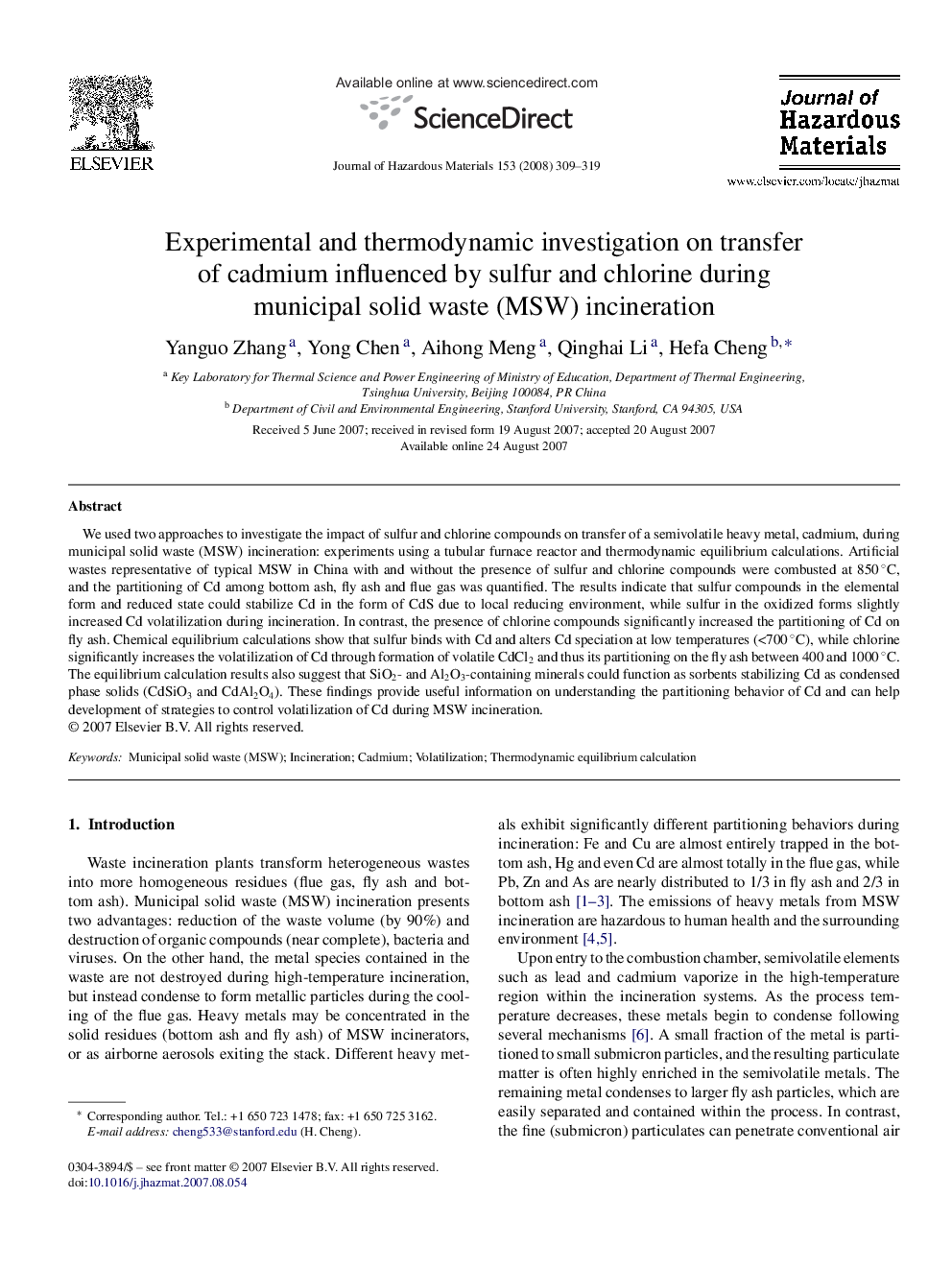| Article ID | Journal | Published Year | Pages | File Type |
|---|---|---|---|---|
| 583113 | Journal of Hazardous Materials | 2008 | 11 Pages |
Abstract
We used two approaches to investigate the impact of sulfur and chlorine compounds on transfer of a semivolatile heavy metal, cadmium, during municipal solid waste (MSW) incineration: experiments using a tubular furnace reactor and thermodynamic equilibrium calculations. Artificial wastes representative of typical MSW in China with and without the presence of sulfur and chlorine compounds were combusted at 850 °C, and the partitioning of Cd among bottom ash, fly ash and flue gas was quantified. The results indicate that sulfur compounds in the elemental form and reduced state could stabilize Cd in the form of CdS due to local reducing environment, while sulfur in the oxidized forms slightly increased Cd volatilization during incineration. In contrast, the presence of chlorine compounds significantly increased the partitioning of Cd on fly ash. Chemical equilibrium calculations show that sulfur binds with Cd and alters Cd speciation at low temperatures (<700 °C), while chlorine significantly increases the volatilization of Cd through formation of volatile CdCl2 and thus its partitioning on the fly ash between 400 and 1000 °C. The equilibrium calculation results also suggest that SiO2- and Al2O3-containing minerals could function as sorbents stabilizing Cd as condensed phase solids (CdSiO3 and CdAl2O4). These findings provide useful information on understanding the partitioning behavior of Cd and can help development of strategies to control volatilization of Cd during MSW incineration.
Keywords
Related Topics
Physical Sciences and Engineering
Chemical Engineering
Chemical Health and Safety
Authors
Yanguo Zhang, Yong Chen, Aihong Meng, Qinghai Li, Hefa Cheng,
